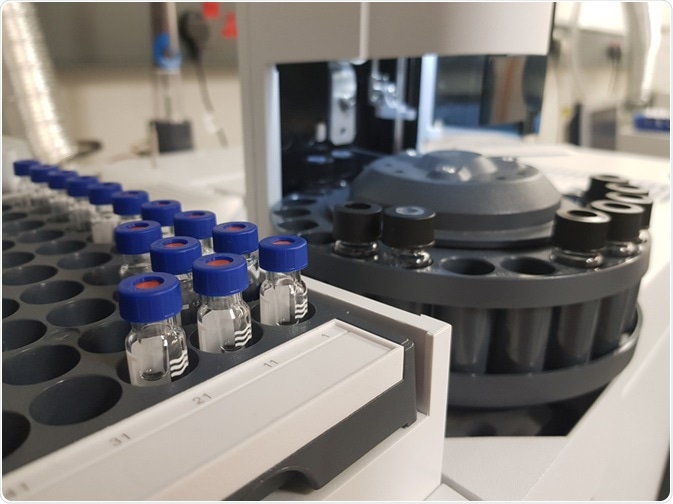Drug testing is commonplace in pre-employment screenings to determine if the candidate has recently used illegal drugs or misused prescribed medications. Drug tests are centered on screening for common illegal drugs such as cocaine, tetrahydrocannabinol, methamphetamine, opiates, and phencyclidine.
While urine testing is a routine drug test employed in a majority of testing labs, the test has a limited window of drug detection of 5 to 10 days. Another form of testing that has been looked upon and used by laboratory testing sites for its longer window of detection is the hair drug test.
Compared to the expensive blood testing with a detection window of hours and oral fluid test with 7 to 21 hours detection period, the hair drug test can detect the illicit substances of interest as long as 90 days after use.
How can drugs be recovered in hair?
Chemicals can be passed from the bloodstream to the hair follicle through passive diffusion, binding to the hair shaft interior tightly by keratogenesis. The amount of drug recovered in hair is also dependent on the concentration of drug in the blood.
As hair formation is a constant growing process, other forms of transfer to the hair cells involve sweat and sebum excreted after hair is formed, alongside the chemicals being brought by the hair emerging from the skin. For instance, multiple studies have shown that amphetamine, cocaine, phencyclidine have been detected in sweat in higher concentrations than in blood.
Another possible route of the drug deposition in hair is by the intradermal transfer of lipid-soluble drugs, such as tetrahydrocannabinol. Nonetheless, researches on the possible mechanisms of drug transfer in hair are still looked upon to assess the drug concentration as well as a person's history of drug use.
Techniques to detect drug use in hair
Techniques to analyze the presence of drugs in hair do not diverge far from the current techniques used for urine, blood, or saliva drug testing. Capillary electrophoresis, gas chromatography, immunoassays, infrared microscopy, and liquid chromatography have been used as techniques to analyze hair samples.
In the collection of hair samples, the hair should be collected from an individual with their hair tied together, hair cut as close to the skin and from the posterior vertex portion of the scalp.
Immunoassays are used for preliminary analytical tests before subsequent instrumental analysis for its uncertain cutoff levels. Positive and negative controls on the immunoassay involve the hair with the drug of interest and the hair without the drug respectively with hair digest mixtures implemented the same way with the hair samples. The hair digest mixtures should also be maintained so that they do not cause the denaturation of reagent mixture antibodies.
Capillary electrophoresis has been used routinely for the detection of 1,4-benzodiazepines, cocaine, ecstasy, methaqualone, and heroin compounds in hair samples. While the technique found to be most efficient based on sensitivity and selectivity is when GC-MS is utilized for the detection of cocaine, opiates, cannabinoids, amphetamines, benzodiazepines. The low amount of drugs in hair samples can be quantified through selected ion monitoring, with the internal standards being the deuterated target drugs.

GC-MS. Image Credit: a_viewfinder/Shutterstock.com
Limitations on Interpretating Hair Analysis Results
While known for the benefits of its wide detection window, concerns are still raised regarding the interpretation of hair analysis for drug identification. Contamination from the external environment plays a huge factor in the analysis.
The human hair has a high surface to volume ratio and an effective washing method of the sample needs to be implemented. Although the best washing method may remove more than 90% of the contaminated components on the sample, yet the remaining contaminated residuals could still cause false-positive results for surpassing the limit of detection.
In addition, variations in the hair analysis may be influenced by the chemical processing of perming, bleaching, and other types of hair treatments.
Henderson et al. found that less cocaine was absorbed by permed hair compared to unpermed hair. Cocaine was also seen to bind less to bleached hair in all hair types and these findings indicate that drugs are either converted to other forms or destroyed in the process.
Environmental factors that affect the moisture of the hair such as humidity may also affect how long drugs bind to the hair. Therefore, hair treatments of the hair samples should be taken into account when interpreting the hair analysis results.
Regarding false-positive test results, the Society of Hair Testing has established recommendations to indicate a true positive result of drug detection. A positive result should be indicated by the efficiency of the washing process and the identification of parent compounds.
Metabolites-to-parent drug ratio as well as the identification of metabolites through the required threshold levels are also recommended to indicate this result. Other variations among hair from different gender, age, and ethnic groups should also be considered when interpreting hair results.
References:
- Concentra. 2020. Pre-Employment Drug Tests: What You Should Know. [online] Available at: <https://www.concentra.com/resource-center/articles/what-do-you-need-to-know-about-pre-employment-drug-tests/#:~:text=A%20pre%2Demployment%20drug%20test%20is%20used%20to%20determine%20if,a%20pre%2Dplacement%20drug%20test.> [Accessed 14 December 2020].
- Boumba, V.A., Ziavrou, K.S., and Vougiouklakis, T., 2006. Hair as a biological indicator of drug use, drug abuse, or chronic exposure to environmental toxicants. International Journal of Toxicology, 25(3), pp.143-163. https://journals.sagepub.com/doi/abs/10.1080/10915810600683028
- Henderson, G.L., 1993. Mechanisms of drug incorporation into hair. Forensic science international, 63(1-3), pp.19-29. https://www.sciencedirect.com/science/article/pii/037907389390256A
- Wennig, R., 2000. Potential problems with the interpretation of hair analysis results. Forensic science international, 107(1-3), pp.5-12. https://www.sciencedirect.com/science/article/pii/S0379073899001462?casa_token=AMqhIrb6NIgAAAAA:6r-wa05gzMijlMAxZdvwCys947mQaoqjP_JUEMQ-hM7vId55mTer_6rUfeJDSH0YrkDleCWTaMCD
Further Reading
Last Updated: Jan 28, 2021